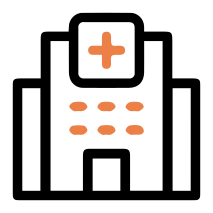Magnetic Resonance Venography (MRV): Purpose, Procedure, Cost, and Side Effects
Introduction
Magnetic Resonance Venography (MRV) is a specialized imaging technique that utilizes magnetic resonance imaging (MRI) technology to visualize veins within the body. Unlike traditional MRI, which focuses on imaging soft tissues and organs, MRV is specifically designed to assess the venous system, offering detailed images of veins and their surrounding structures. This non-invasive procedure plays a crucial role in diagnosing and managing various venous disorders, providing invaluable insights into conditions affecting the venous system.
Purpose of Magnetic Resonance Venography (MRV)
MRV serves multiple purposes in the diagnosis and evaluation of venous conditions. Its primary uses include:
- Diagnosing Venous Thrombosis: One of the main applications of MRV is to diagnose venous thrombosis, including deep vein thrombosis (DVT) and cerebral venous sinus thrombosis (CVST). By providing clear images of the veins, MRV helps in detecting blood clots, assessing their location and extent, and determining appropriate treatment strategies.
- Evaluating Venous Malformations: MRV is used to evaluate various venous malformations, such as venous malformations in the brain or other areas. This includes identifying abnormal vein structures and assessing their impact on surrounding tissues. Accurate imaging is essential for planning surgical interventions or other treatments for these conditions.
- Pre-Surgical Planning: For patients undergoing surgery that involves or affects the venous system, MRV provides detailed anatomical information that assists in pre-surgical planning. This ensures that surgeons have a comprehensive understanding of the venous structures, which helps in minimizing risks and optimizing surgical outcomes.
- Assessing Venous Insufficiency: MRV can be used to assess chronic venous insufficiency, a condition where veins are unable to effectively return blood to the heart. This assessment helps in evaluating the severity of the condition and planning appropriate treatment, including lifestyle changes, medications, or surgical options.
- Investigating Headaches and Neurological Symptoms: In cases of unexplained headaches or neurological symptoms, MRV of the brain’s venous sinuses can help identify issues such as venous sinus thrombosis. This is important for diagnosing and managing conditions that might affect cerebral blood flow.
Procedure of Magnetic Resonance Venography (MRV)
The MRV procedure involves several key steps to ensure accurate imaging of the venous system:
- Preparation: Before the MRV scan, patients are typically asked to remove any metal objects, including jewelry, hairpins, and removable dental work. Metal can interfere with the MRI’s magnetic field and affect image quality. Patients may also be asked to change into a hospital gown if necessary. It is important to inform the MRI technician about any implanted medical devices, such as pacemakers or metal implants, as these can affect the scan.
- Positioning: The patient will lie on a motorized table that slides into the MRI machine, which is a large, tube-shaped magnet. The area of interest will be positioned in the center of the machine. For MRV, the patient may be asked to hold their breath or stay still to avoid motion artifacts that can distort the images.
- Contrast Agent Administration: In many cases, a contrast agent (usually gadolinium-based) is injected into a vein to enhance the visibility of the veins and improve image quality. The contrast agent helps to highlight the venous structures and any abnormalities present. The injection is typically done through an intravenous (IV) line placed in the arm.
- Scanning: The MRI machine will produce a series of radiofrequency pulses and magnetic fields to generate images of the veins. The MRV scan usually takes between 30 to 60 minutes, depending on the complexity of the study and the specific area being examined. During the scan, the machine may produce loud noises, so patients are often provided with earplugs or headphones.
- Completion: After the scan, the patient can usually resume their normal activities immediately. The images are then reviewed by a radiologist, who will prepare a detailed report for the referring physician. This report will include findings related to the venous structures and any abnormalities detected.
Cost of Magnetic Resonance Venography (MRV)
The cost of an MRV scan varies widely based on several factors, including geographic location, healthcare facility, and whether the procedure is covered by insurance. On average, the cost ranges from $1,500 to $4,000 in many parts of the United States. This price typically includes the scan itself, any contrast agents used, and the interpretation of the images by a radiologist.
In other countries or regions with different healthcare systems, the cost may be lower. Patients should check with their healthcare provider and insurance company to understand the specific costs and coverage options related to their MRV scan. Insurance coverage for MRV may vary depending on the medical necessity and the specific condition being investigated.
Side Effects of Magnetic Resonance Venography (MRV)
MRV is generally considered safe with minimal risks. However, there are some potential side effects and considerations:
- Discomfort from the MRI Machine: The MRI machine can be noisy, producing loud banging or thumping sounds during the scan. Patients are usually provided with earplugs or headphones to reduce the noise. Some individuals may experience discomfort or claustrophobia inside the narrow MRI tube, but this can often be managed with relaxation techniques and communication with the medical team.
- Contrast Agent Reactions: If a contrast agent is used, there is a small risk of an allergic reaction. Symptoms may include rash, itching, or swelling. Most reactions are mild, but in rare cases, severe allergic reactions can occur. It is important to inform your healthcare provider of any known allergies before the scan.
- Metal Implants and Devices: Patients with certain metal implants or medical devices may not be able to undergo an MRV scan due to the strong magnetic fields. This includes pacemakers, cochlear implants, and certain types of metal plates or screws. It is crucial to inform the MRI technician about any such devices.
- Pregnancy Considerations: While MRV is generally considered safe during pregnancy, it is often avoided during the first trimester unless absolutely necessary. The potential risks of the magnetic fields and contrast agents to the developing fetus are not fully understood, so precautionary measures are taken.
Frequently Asked Questions (FAQs)
What is Magnetic Resonance Venography (MRV) used for?
Magnetic Resonance Venography (MRV) is used to visualize and assess the veins within the body. It is particularly useful for diagnosing venous thrombosis (e.g., deep vein thrombosis and cerebral venous sinus thrombosis), evaluating venous malformations, planning surgeries, assessing chronic venous insufficiency, and investigating neurological symptoms. MRV provides detailed images of venous structures and is a critical tool in managing venous disorders.
How does MRV differ from a regular MRI?
While both MRV and regular MRI use magnetic fields and radio waves to generate images, MRV specifically focuses on visualizing veins and the venous system. Regular MRI provides detailed images of soft tissues and organs, whereas MRV is optimized for imaging veins and detecting abnormalities within the venous system. MRV may use contrast agents to enhance the visibility of venous structures.
What should I expect during an MRV scan?
During an MRV scan, you will lie on a table that moves into the MRI machine, which is a large, tube-shaped magnet. You may be asked to hold your breath or stay still to avoid motion artifacts. A contrast agent may be injected into a vein to improve image quality. The scan usually takes between 30 to 60 minutes, and you may experience loud noises from the MRI machine, which is mitigated by earplugs or headphones.
Is an MRV scan painful?
An MRV scan is generally not painful. The most common discomfort may come from lying still for an extended period and the loud noises produced by the MRI machine. If a contrast agent is used, there may be some temporary discomfort at the injection site, and a small risk of allergic reactions. Most patients find the procedure to be tolerable with minimal discomfort.
How should I prepare for an MRV scan?
Preparation for an MRV scan includes removing any metal objects, such as jewelry or hairpins, as these can interfere with the MRI’s magnetic field. You should inform the MRI technician about any implanted medical devices or allergies to contrast agents. You may also be asked to change into a hospital gown if necessary. It is important to follow any specific instructions provided by your healthcare provider.
Are there any risks or side effects associated with MRV?
MRV is generally considered safe, but there are some potential risks and side effects. These include discomfort from the MRI machine’s noise, reactions to contrast agents (if used), and issues for patients with metal implants or devices. Claustrophobia may also be a concern for some individuals. The use of strong magnetic fields is carefully managed to ensure patient safety.
How long does an MRV scan take?
An MRV scan typically takes between 30 to 60 minutes. This includes time for positioning, the actual imaging process, and the administration of a contrast agent if required. The duration may vary depending on the complexity of the study and the area being examined. The scan itself is relatively short, but preparation and setup can extend the total time.
How much does an MRV scan cost?
The cost of an MRV scan varies widely depending on factors such as location, healthcare facility, and insurance coverage. On average, it ranges from $1,500 to $4,000. Costs may be lower in regions with different healthcare systems. It is advisable to check with your healthcare provider and insurance company to understand the specific costs and coverage options for your
MRV scan.
Can I resume normal activities after an MRV scan?
Yes, most patients can resume their normal activities immediately after an MRV scan. The procedure is non-invasive and does not typically require any recovery time. However, if the scan is part of a broader diagnostic or treatment plan, or if any complications arise, your healthcare provider will provide specific instructions regarding follow-up and any potential need for observation.
Are there alternatives to MRV for imaging veins?
Yes, alternatives to MRV for imaging veins include ultrasound and conventional venography. Ultrasound is often used for assessing deep vein thrombosis and other venous conditions and is a non-invasive, readily available option. Conventional venography involves injecting a contrast agent directly into the veins and taking X-ray images, which can also provide detailed information about venous structures. The choice of imaging technique depends on the clinical context and specific needs of the patient.







 and then
and then